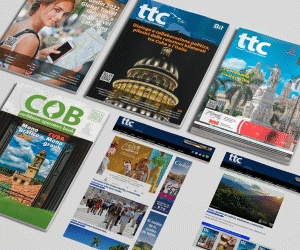Dominican Republic drives caribbean tourism surge with 22 % increase in visitor arrivals

In January 2025, the Dominican Republic experienced a significant boost in tourism, welcoming over one million visitors, including substantial numbers from the US, Canada, and Russia. This twenty-two percent increase compared to the previous year reflects the country’s growing appeal as a prime travel destination, fueled by its diverse attractions, improved cruise ship connectivity, and sustained marketing efforts targeting key international markets. The steady rise in arrivals during the first quarter, coupled with high hotel occupancy rates, underscores the Dominican Republic’s successful strategy in attracting tourists from major source countries, contributing to its expanding tourism sector and economic growth.
Dominican Republic Tourism Sees Robust Growth in Early 2025 While Cuba Faces Mixed Visitor Trends
Key Source Markets Drive Dominican Republic Tourism
Beyond these leading markets, Argentina contributed eight percent, Colombia five percent, and France three percent of total inbound travelers, indicating the nation’s appeal extends across the Americas and into Europe. The growing diversity of international tourists reflects the Dominican Republic’s enhanced global visibility, spurred by investments in infrastructure, hospitality services, and cultural offerings.
Cruise tourism also continues to play a vital role in visitor inflows. The 395,555 cruise passengers arriving in January highlight the country’s strategic importance as a Caribbean cruise port of call, benefiting from its modern port facilities and vibrant local experiences that attract short-stay visitors.
Cuba’s Visitor Trends Show Mixed Signals Amid Room Supply Growth
Meanwhile, over the same three-month span, Cuba registered 571,772 international arrivals, representing seventy-one percent of its total tourist volume for the entire year of 2024. The data points to Cuba’s tourism sector still recovering and adapting post-pandemic but facing challenges in matching previous visitor levels.
Canada leads as the foremost market for Cuba during this period, with 272,274 visitors. This figure accounts for forty-seven point six percent of arrivals in the quarter, albeit lower than the sixty-eight point two percent share recorded in 2024, signaling some decline in Canadian tourist numbers. Cuban expatriates visiting from abroad totaled 59,896, representing ten point four percent of arrivals and maintaining eighty percent of the prior year’s volume. These returning nationals continue to be an important source of tourism revenue.
The United States contributed 39,447 visitors, accounting for seven percent of arrivals during the quarter and eighty-four point four percent of the 2024 benchmark. While US arrivals have not yet returned to pre-pandemic levels, the gradual increase points to improving travel relations and easing restrictions. Russian tourists added 33,395 arrivals, or six percent of the total, though this represents only half of the number recorded in 2024, reflecting geopolitical and economic factors affecting outbound travel from Russia.
Accommodation Capacity and Occupancy Challenges in Cuba
According to the 2023 Cuban Statistical Yearbook, the country had a total of 86,559 physical guest rooms across various hospitality establishments. However, this figure excludes private accommodation rentals, a rapidly growing segment of Cuba’s tourism industry that operates largely outside official statistics. The omission raises questions about the full scale of the accommodation supply and the contribution of private lodgings to the national tourism economy.
Among the registered hotel rooms, eighty-one point seven percent were located within three- to five-star properties, underscoring Cuba’s focus on mid- to upscale hospitality offerings. The country saw the completion of several hotel projects in 2024, including the opening of a new hotel at the intersection of K and 23 streets in early 2025, likely contributing to a modest expansion in room inventory.
Despite these supply gains, occupancy rates have presented challenges. Cuba’s average annual hotel occupancy rate was thirty-one point seven percent in 2023, dropping further to twenty-three percent in 2024. This decline reflects a combination of factors, including fluctuating international demand, economic constraints, and increased room availability diluting occupancy percentages.
Looking ahead, given the continued growth in accommodation capacity coupled with a decrease in visitor arrivals during the first quarter of 2025, occupancy rates are expected to dip further. This scenario presents a key area of concern for Cuban tourism authorities, highlighting the need to stimulate demand and optimize hotel utilization.
Comparative Outlook and Strategic Considerations
While the Dominican Republic enjoys steady growth supported by strong arrivals from key markets such as the United States and Canada, Cuba’s tourism sector faces more complex dynamics. The Dominican Republic’s ability to leverage its established air and cruise connectivity, diverse source markets, and robust hospitality infrastructure has positioned it well to capitalize on increasing travel demand in 2025.
In contrast, Cuba’s slower recovery and occupancy challenges reflect the lingering effects of travel restrictions, economic pressures, and geopolitical factors affecting visitor flows, particularly from traditional markets like Canada, the United States, and Russia. The exclusion of private accommodation from official statistics also obscures the full picture of Cuba’s tourism capacity and potential.
For Cuba, strategic focus areas may include expanding marketing efforts to emerging markets, enhancing the appeal of new and renovated properties, and integrating the private lodging sector into broader tourism planning. For the Dominican Republic, sustaining momentum will depend on continued investment in infrastructure, service quality, and diversification of source markets beyond North America.
Early 2025 tourism data paints a contrasting picture for two of the Caribbean’s leading destinations. The Dominican Republic’s solid visitor growth and strong hotel occupancy rates reflect a resilient and expanding sector benefiting from targeted strategies and favorable market conditions. Meanwhile, Cuba’s tourism numbers reveal ongoing challenges in achieving previous levels of demand amid increasing accommodation supply.
The Dominican Republic’s tourism surged in January 2025, driven by increased arrivals from the US, Canada, and Russia, thanks to enhanced travel links and strong marketing efforts. This growth highlights the country’s rising appeal as a top international destination.
As both countries navigate the evolving global travel landscape, their differing experiences underscore the importance of market diversification, infrastructure development, and adaptive strategies to meet traveler expectations and maximize economic benefits from international tourism.
Source: Travel and Tour World

MORE NEWS










